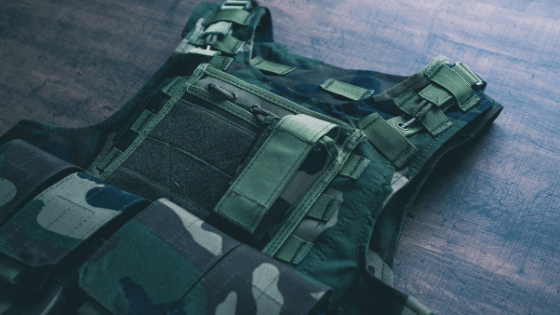Kloeckner Metals supplies UL NIJ Ballistic Tested Plate to body armor manufacturers nationwide.

Body armor standards are established by the Underwriters Laboratory and National Institute of Justice, and they help buyers know what kind of protection they’re getting. The higher the armor’s number, the greater the protection, and generally the higher the weight and cost.
To meet the needs of body armor, UL NIJ Ballistic Tested Plate tends to have fair welding, poor machining, and poor forming, but excellent wear resistance.
It is used in the military and law enforcement industry.
It is mainly used equipment for the military and law enforcement, like body armor.
This steel plate tends to have poor machinability.
UL NIJ Ballistic Tested Plate tends to have fair welding capabilities.
To meet the needs of body armor, UL NIJ Ballistic Tested Plate tends to have fair welding, poor machining, and poor forming, but excellent wear resistance.
It is used in the military and law enforcement industry.
It is mainly used equipment for the military and law enforcement, like body armor.
This steel plate tends to have poor machinability.
UL NIJ Ballistic Tested Plate tends to have fair welding capabilities.
ANSWER:
Originally, armor was quite heavy and difficult to maneuver. On the other hand, it is considered a necessity to protect vital organs that are located in the thorax and chest area. To take advantage of its strength while giving it mobility, armor is provided in “plate carrier” vests. Worn by the military and police, the vest allows law enforcement personnel to swap out armor plates as needed.
ANSWER:
The National Institute of Justice establishes the body armor standards, as well as informs customers on what kind of body armor and protection they are getting. An example is the the Level III armor, which can stop some rifle rounds like the 7.62 x 39. Pistol rounds up to and including 0.357 Magnum can be stopped by Level IIIA armor.
ANSWER:
Originally, armor was quite heavy and difficult to maneuver. On the other hand, it is considered a necessity to protect vital organs that are located in the thorax and chest area. To take advantage of its strength while giving it mobility, armor is provided in “plate carrier” vests. Worn by the military and police, the vest allows law enforcement personnel to swap out armor plates as needed.
ANSWER:
The National Institute of Justice establishes the body armor standards, as well as informs customers on what kind of body armor and protection they are getting. An example is the the Level III armor, which can stop some rifle rounds like the 7.62 x 39. Pistol rounds up to and including 0.357 Magnum can be stopped by Level IIIA armor.
Steel base plates are fundamental elements employed in various manufacturing processes. These flat, rectangular...
Metal fabrication is a critical process that transforms raw metal materials into finished products....
The solar industry has undergone a significant transformation by incorporating steel products into various...
The unprecedented pace of solar growth is challenging and reforming America’s construction and engineering...
If you’ve got a roof over your head, it’s partly thanks to purlins. A...
Acquiring highly profitable company with annual sales of around USD 30 million Significant expansion...
A stainless steel depot is a specialized facility or supplier that stocks and provides...
American manufacturers use about 28.2 billion pounds of aluminum every year, 41.6% of it...
Leading steel distributor expands commitment to sustainability in the North American market. Kloeckner Metals,...
At Kloeckner, we are excited to announce that our Santa Fe Springs, CA location...

X
The Kloeckner Metals website uses modern technologies. Unfortunately, your browser doesn't support those technologies.
Download the latest version of one of these browsers to experience the site: